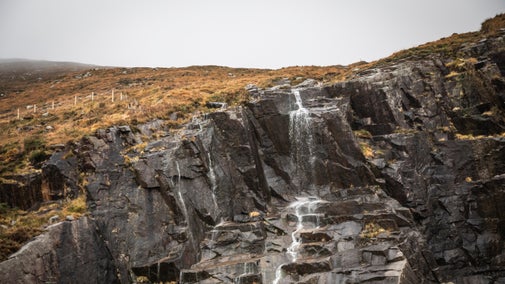Our work in Windermere - land management that works for people and nature
- Published:
- 30 December 2025

Jump to
Windermere is a busy tourist destination with the largest local community in the Lake District National Park. In Windermere the National Trust owns a number of small farms, numerous pockets of countryside, several patches of lakeshore and the Footprint building. This patchwork of land presents us with an opportunity to protect, restore and create spaces for nature that benefit wildlife and people on a landscape scale.
Together with the help of our neighbours, the local community and our partners we can create opportunities for sustainable farming and farm diversification, find more space for nature, build climate resilience and offer great experiences in the outdoors.
About Windermere
Windermere welcomes hundreds of thousands of visitors each year coming to enjoy its amazing walks, heritage and to access England’s largest lake. The Trust is a major landowner in Windermere with jigsaw pieces of land set within the wider landscape. Windermere is a varied mix of bustling urban spaces, low-level fells and lakeshore parks, farmland and isolated pockets of rich wildlife habitat.
- Windermere is a hotspot for some rare and endangered species including, white clawed crayfish, touch me not balsam, netted carpet moths, duke of burgundy butterflies and rare breed albion cattle.
- Windermere is England’s largest lake, concerns have been raised about the health of the lake, in particular algal blooms and bacterial pollution.
Our aims
Increase the climate resilience measures that are in place throughout the catchment, including creating new wood pasture, restoring meadows and grasslands and creating ponds.
Work with our neighbours, tenant farms, partners and the local community to create wildlife habitats that are bigger, better and more joined up.
Make it easier for people to get out and enjoy the outdoors and inspire the local community to love and care for the natural world around them.
What we've achieved so far
Achieved in 2025
- Planting rare fruit trees at Common farm in partnership with South Lakeland Orchard Group
- Working with the local community to explore how we can make our outdoor spaces more welcoming and easy to access
- Restoring 70 hectares of grassland at Common Farm, Fell Foot and Grove farm
- Undertaking butterfly and moth surveys at Moor How and High Lickbarrow
- Creating ponds and wetland at Common Farm as part of a natural flood management (NFM) scheme funded by the Environment Agency’s Natural Flood Management Programme. By storing water in these features in the landscape we’ll slow the flow of water into Mill Beck, which flooded parts of Windermere town during Storm Desmond in 2015. It will benefit nature by creating new wetland habitats and supporting the wider nature restoration efforts on the farm. Learn more about how we're restoring Cumbria's waterways through the Riverlands project.
- Welcoming more school groups to learn about land management and nature conservation at Common farm
- Planning to create new walking routes up onto Orrest Head, Bannerigg summit and through the wider Crosthwaite estate
Why is this work important?
How can you get involved?
Just by visiting our places, parking in our car parks and drinking tea in our cafes you are supporting the work we do. However, if you want to get more involved you can volunteer, help plant trees or donate to one of our appeals.
Windermere has a wonderfully dedicated and passionate team of volunteers and we’re always looking to grow our volunteer numbers. If you’d like to know more about how you can volunteer, email us.
Love Winderemere
The Love Windermere partnership is working to bring about a healthier future for the lake and the surrounding area, balancing the needs of nature, the community and the local economy. As a partner in Love Windermere we hope to make a positive impact on the lake and ensure it can be enjoyed now and in the future.
As a conservation charity we recognise that water is the lifeblood of the UK’s landscapes and environment, and we are dedicated to making improvements wherever we can. Although we don’t own the lake itself, we are continuing to deliver conservation work in the upper catchment areas (Langdale, Ambleside, Windermere and Hawkshead) to ensure that water joining the lake from National Trust land is as healthy as possible. Find out more about Love Windermere.
You might also be interested in
Follow the Countryside Code
Help to look after National Trust places by observing a few simple guidelines during your visit and following the Countryside Code.

Events in Windermere
Find out what events we have coming up in Windermere.

Love Windermere
We are part of the Love Windermere partnership. Find out more about how the Love Windermere partnership is working to bring about a healthier future for the lake and the surrounding area, balancing the needs of nature, the community and the local economy.

Climate Action Appeal
Climate change is the biggest threat to people and nature but with your support, the landscapes we care for can adapt to the challenges they face. Donate today to bring back wildlife, keep rivers flowing and protect woodlands and peatlands.






